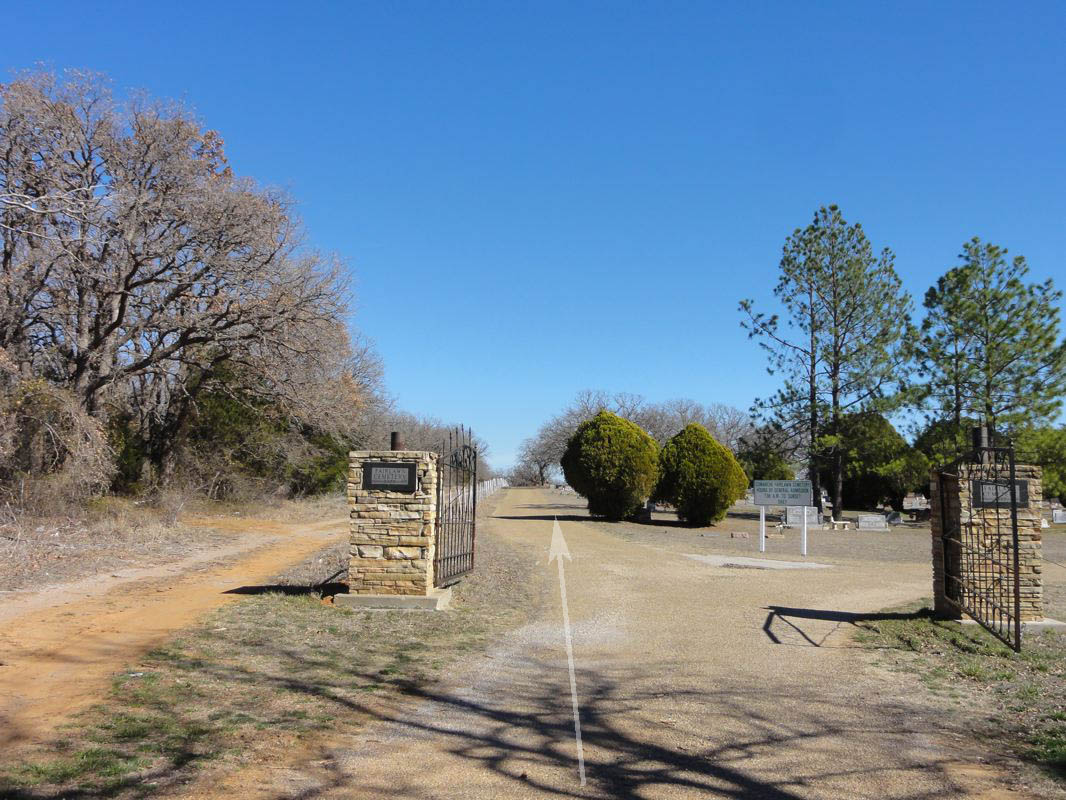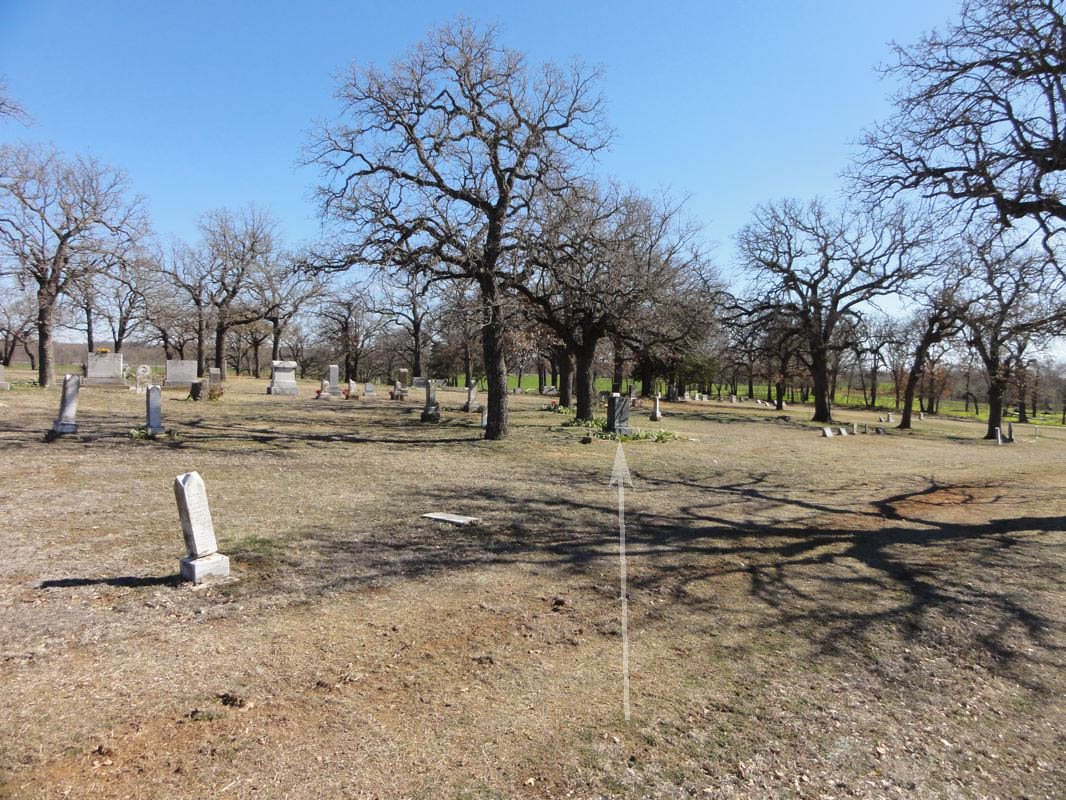Ulysses Grant Wilkinson
1863-1925
![]()
The Life of Ulysses G. Wilkinson
Ulyses Grant Wilkinson, one of the truly great pioneer gospel preachers in Oklahoma, was born July 30, 1863 near Springfield, Mo. He was of Irish ancestry, and was said to “have strong streaks of Irish in his make-up”. His ancestors, though from Ireland, had been in the U.S.A. since before the American Revolution. His parents were Carroll and Mary Ann Elizabeth Davis Wilkinson, who were married in 1857 and became the parents of nine children.
U.G. being the second child and the first son. While still in infancy, his parents moved to the vicinity of Lebanon in nearby Laclede county. When he was four years old they moved to Barry county near the town of Shell Knob, settling on Kings River about a mile and a half from where it empties into the White River. Here the family remained until the spring of 1874 when they moved to Texas, settling near Covington in Hill county. It was here that he received his first education by attending a school known as “Gath- ings College”, taught by J.M Huffington, considered to be one of the best teachers of his time. For a few years he alternated between the cotton fields and the class room. From Hill county the family moved to Palo Pinto county, and here he attended a country school taught by F.L. Young, who later became one of the leading gospel preachers in Texas, and J.T. Daniel, who later became a lawyer. At the first of 1880 the family moved to Montague county, settling on the Red River. The beautiful “Indian Country" was just across this river. They lived near Red River Stationland and Eagle Point, both places now only a memory in the minds of very few people. In 1887, his twenty fourth year, the family moved to the Chickasaw Nation, settling between what is now Duncan and Comanche. He was described as a man six feet tall, weighing two hundred pounds, with blue eyes, fair complexion, and with blue-brown hair. He was said to be honest, highly moral, religious, steadfast and immovable in his convictions of right, always guided by his sense of right and justice, kind, gentle, courageous, severe in denouncing wrong, sentimental, affectionate, firm almost to obstinacy, yet readily yielding when convinced of an error or mistake. (For several generations his people had been Christians, and several of his brothers also became gospel preachers.) He continued his schooling, and came to hold a “first grade certificate.” Throughout life he continued to be what was then called “a hard student,” and became one of the best educated men of his time. The Bible and kindred literature being the principal area of his study. From childhood he was inclined toward literary interests, and this trait never left him, though for much of his life he was thrown with the “rough and ready” elements of the frontier, where he worked in the fields and as a cowboy. Oklahoma was a new country when they arrived there. That meant there were no schools, churches, roads, or other facilities for public service. It was a paradise for the hunter and stockman.

U.G. took an active part in helping to build the first school house in Cow Creek country where they lived. With some others, he went over into the Comanche country, West of where they lived,to get material to build a school house. This was a violation of the law, but “it was for a good cause” and the laws were not enforced very well, so they got the material with which to build their school house. A day was set to “raise” the building, and it was done, though the finish work took a little longer. He was employed to teach the first school. He had more than fifty students ranging in age from six to twenty five years, most of whom had never been in school and had no acquaintance with books. The school term lasted seven months, and he had to carry a six shooter for self-protection. Schools in those days usually had a “literary society”, and this one was conducted on Saturday night. They often had debates, and other things of interest. He taught this same school the second year. Through all the years he was a “builder,” first of schools then of churches. He called the first preacher, J.C. Brown, who had baptized him in Texas, into the territory. (He was baptized in 1884) Brown preached and established the first congregation in the area. He, his mother and two sisters were charter members of this church. On July 30, 1891, his twenty eighth birthday, he was married to Miss Jennie M. Pas- chall, aged nineteen, by C.E. Prichard, of the Chickasaw Nation. (Prichard was a gospel preacher who had come into the territory' from Jack county, Texas.) Another couple, B.H. McMasters and Miss Eliza Owen went with them and were married at the same time. His brother, Joe B. and Jennie’s sister, Sarah, were also with them. They were married later. After his death, Jennie wrote: “His marriage has been an unusually happy one, but they have no children.”
After the marriage they settled in a small log house about four miles North of Comanche, which he had built himself, and here they farmed. He soon began the study of law, and after about two years was admitted to The Bar. He located in Duncan and established a law practice there. About this time he also began to preach, and for several years there was a conflict between the two callings. Fortunately, for The Cause, the preaching won, and he devoted himself for the rest of his life to that worthy work. He did much writing and debating in connection with it. He also did some secular writing, and wrote some poetry. He became one of the best debaters in the brotherhood, and his debates included encounters with all the sects in the area, and much debating with “infidels.” (A wave of socialism swept through the country, and this produced a lot of unbelievers of various sorts.) He debated their “top men,” such as L.S. Welch, John R. Charlesworth, Charles C. Moore, Anson A. Smow, (this debate was published) Stanley J. Clark, W.L. Thurman, (he was once a gospel preacher, but “went astray”. In later life he came back.) G.G. Hamilton, W.S. Noble, J.H.I. Curry, and other Socialist leaders. Such debates created much interest and it was not unusual for people to travel fifty or more miles to attend one. This speaks well for their importance when one thinks of the transportation and roads available. He did much writing, and published quite a bit of material, such as “Infidelity Against Itself,” a small book of poems, “The Snow-Wilkinson Debate, a work on Evolution,” and “Why I am Not A Socialist.” He served at one time as the editor of a religious paper, “Sound Doctrine”. He also served as one of the editors of the Gospel Guide, published by Joe S. Warlick in Dallas. His preaching was typical of the period, which included protracted meetings, and Sunday appointments in the winter months, along with the debates and the writing. He did more debates and writing than the average preacher of his time. This work took him into much of Oklahoma, Texas, Missouri, Illinois, and Arkansas. Support was very small and he and his companion did this work at great sacrifice, perhaps such as none of us can now imagine. But he planted The Cause in many places and led thousands to The Lord, and the generations of preachers that have followed are deeply indebted to him and his kind for making the way easier.
In addition to the works mentioned, he also published “The Great Conflict,” many fine sermons, songs, and poems. There were three or four books on needed subjects for The Church, such as “The Evangelist and Elders, Who Are They And Can We Know By The Bible?” He was known as one of the very best Bible students among us, and when confronted with a question, always asked, “What Does The Book Say?”
He was in poor health the last ten years of his life, and his reports of meetings often mentioned the fact that this hindered his work. The financial problem was always there, and it was very real, especially since he was unable to work much of the time. Appeals, that must have been very embarrassing to him were often made through the church papers by brethren who knew of his plight. This brought in most of what he had to live on and pay medical bills. Even in these time, he continued to write.
He went to a number of places seeking health, but it always eluded him. Near the end he went to a hospital in Dallas, but to no avail, and on January 31, 1925, at the age of sixty one years, six months, and one day, he went the way of all the earth. Just before leaving for Dallas, he had preached his final sermon in Comanche, his home. Just a month from that day he lay in death in the Pearl and Bryan meeting house in Dallas for a memorial service. That night they took the body “home,” and the following day, Monday, Feb. 2, another memorial service was conducted, this one in his home town of Comanche. He was buried in the Comanche cemetery.
For forty one years, or two thirds of his life he had given himself to the service of his Master, and to preaching his word for at least the last seventeen years. And he was a faithful and productive worker.
His companion continued for quite some years, living in Comanche to the end. She often wrote to various “brotherhood papers” telling of interesting things in Comanche, and the area. She often mentioned hearing some preacher, and she always spoke well of them. She seemed to take special pleasure in visiting other congregations. Her financial situation was not good. About all he had to leave her was a stock of some of his books. She sold these until they were all gone, and did the best she could. In time; of special need brethren would sometimes speak of it through the papers and ask for help. Of course some would always be sent, but probably not as much as should have been sent. They were a good “team”, and no doubt are re-united “over there”. May God bless the memory of such people — AND HE WILL!
-Loyd L. Smith, Gospel Preachers of Yesteryear, Pages 426-429, Originally appearing in The Christian Worker, in August, 1984
![]()
U.G. Wilkinson Attended The Warlick-Ditzler Debate of 1905

The Warlick Ditzler Debate Took Place in Cordell, Oklahoma in November, 1905
Can you identify others? Let us know!
![]()
Directions To The Grave of U.G. Wilkinson
U.G. Wilkinson is buried in the Old section of Fairlawn Cemetery. Comanche is located in Stephens County, Oklahoma.
From Oklahoma City: Head SW on I-44 (Note: This is a toll road. Be sure to bring change with you) to Chickasha, and take Hwy. 81 south. Go through Rush Springs, Marlow and Duncan. As you come into Comanche, turn left on Old U.S. Hwy. 81/Meridian Road Road. Go about a mile, and you will see Fairlawn Cemetery on the right. Do not enter the cemetery where you see the entrance. Go further north and turn right on Paul Rd. Go toward the rear of the cemetery on your right, and enter into the old Section. Head toward the rear and turn to the right on the road just before the end. Note: The little roads are very faint to the eye, but will be obvious drive areas separating the sections. When you turn right, begin looking on your left for a dark upright stone between two trees. This is the Wilkinson Plot. Plot Info: Section 2.
From Wichita Falls, Texas: Head north on I-44 (Note: This is a toll road. Be sure to bring change with you) to Oklahoma, Exit 20. Turn right on Hwy. 53, and head east toward Comanche. In Comanche, turn left on Rodeo Dr. (Hwy.81) and head north. As you are leaving town, bear right on Old U.S. Hwy. 81/Meridian Road. Go about a mile, and you will see Fairlawn Cemetery on the right. Do not enter the cemetery where you see the entrance. Go further north and turn right on Paul Rd. Go toward the rear of the cemetery on your right, and enter into the old Section. Head toward the rear and turn to the right on the road just before the end. Note: The little roads are very faint to the eye, but will be obvious drive areas separating the sections. When you turn right, begin looking on your left for a dark upright stone between two trees. This is the Wilkinson Plot. Plot Info: Section 2.
GPS Location
34.389733,-97.958117
View Larger Map
![]()
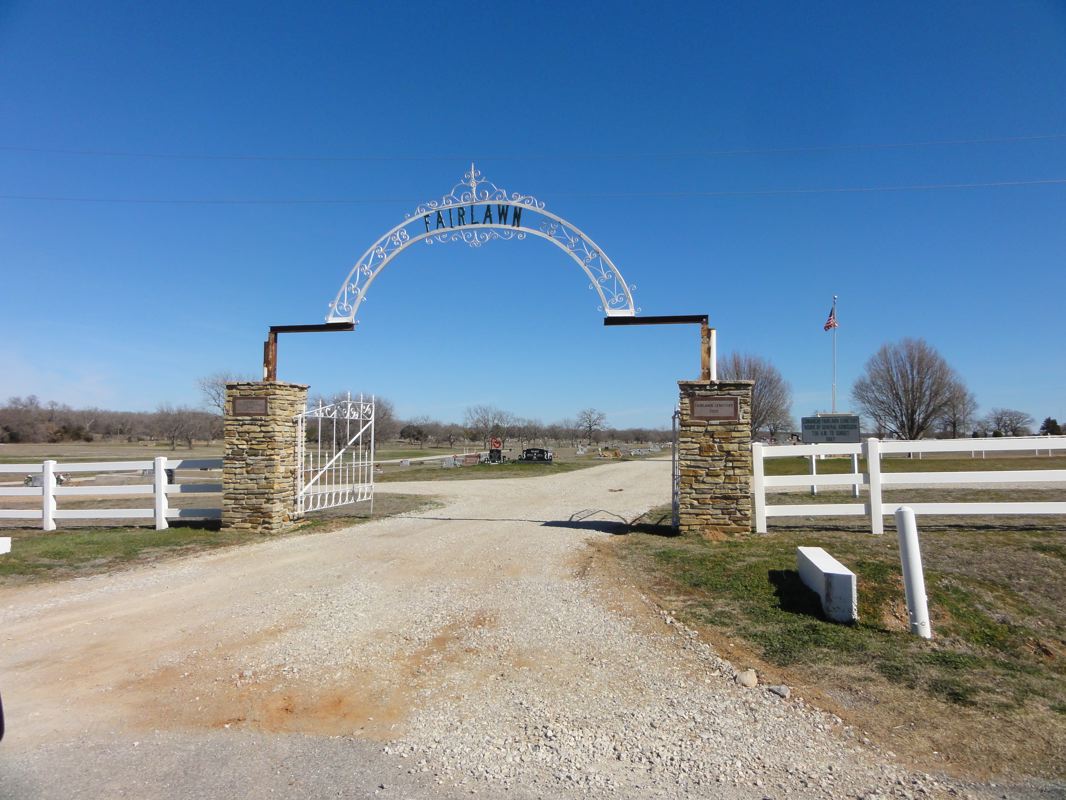
Fairlawn Cemetery Main Entrance
Do not enter here, but go up one road further
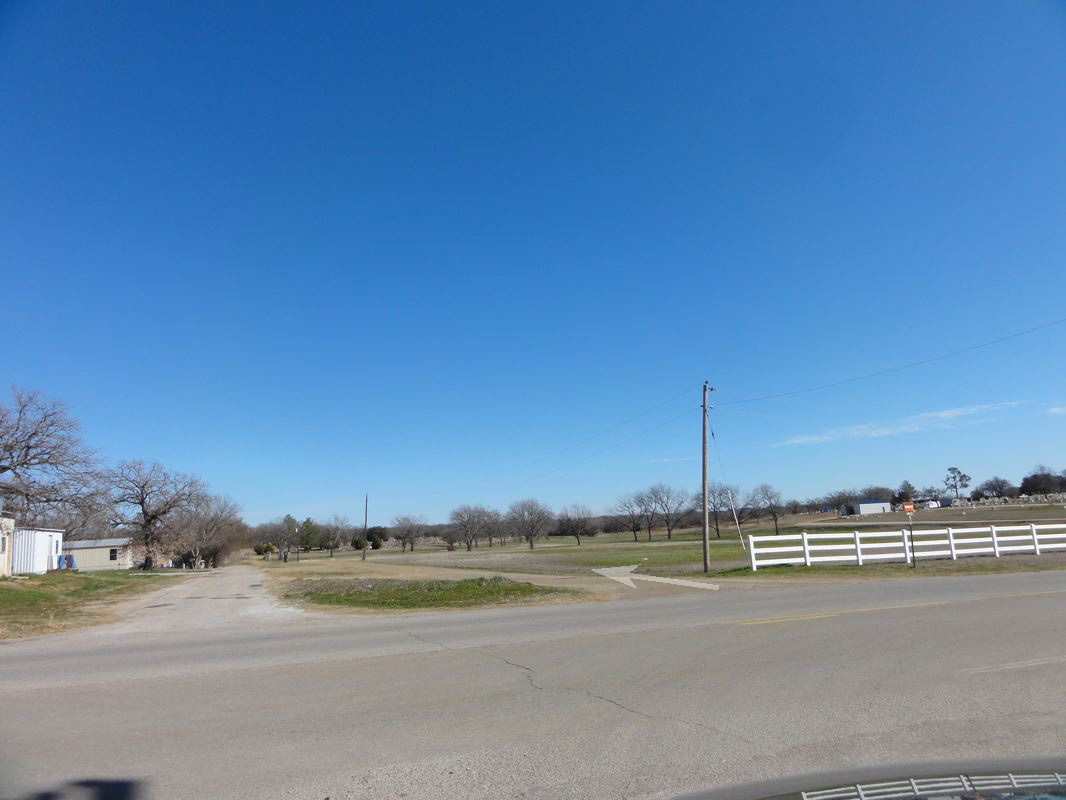
Paul Road - Head To End To Enter Old Part of Cemetery
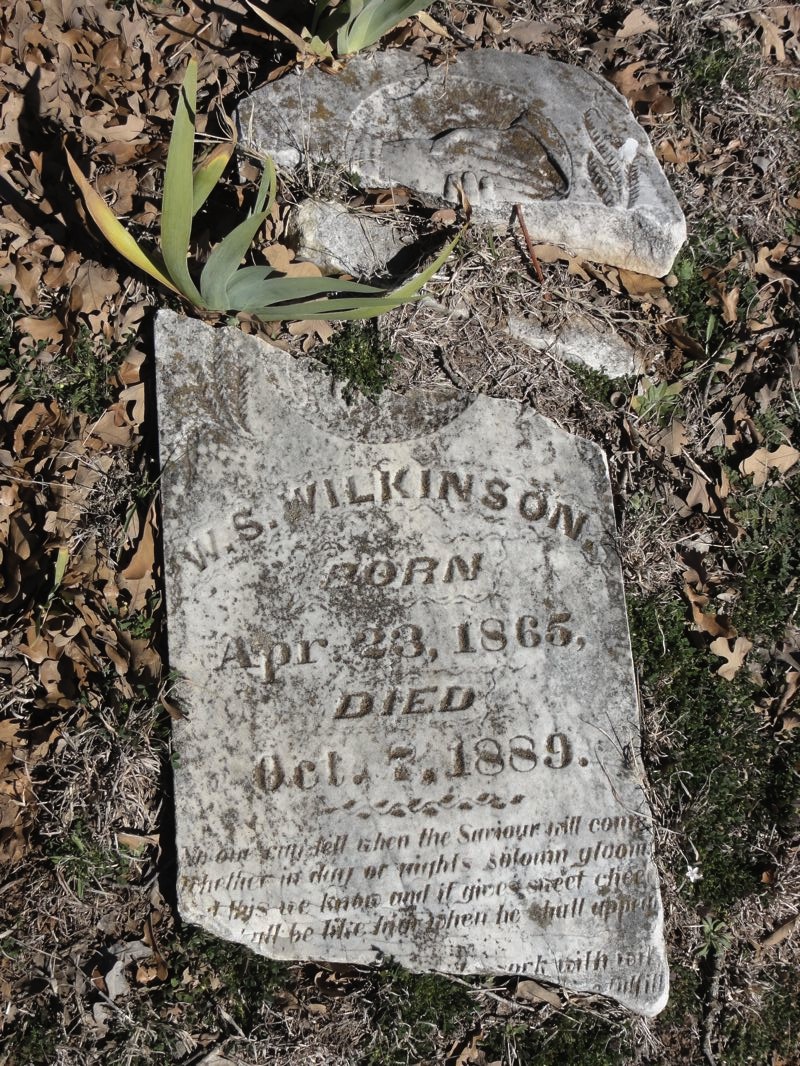
W.S. Wilkinson
Born
April 23, 1865
Died
October 7, 1889
No one can tell when the Saviour will come
Whether in day or night's solomn gloom.
But this we know, and it gives sweet cheer,
What it will be like when He shall appear.
A brother of U.G. Wilkinson
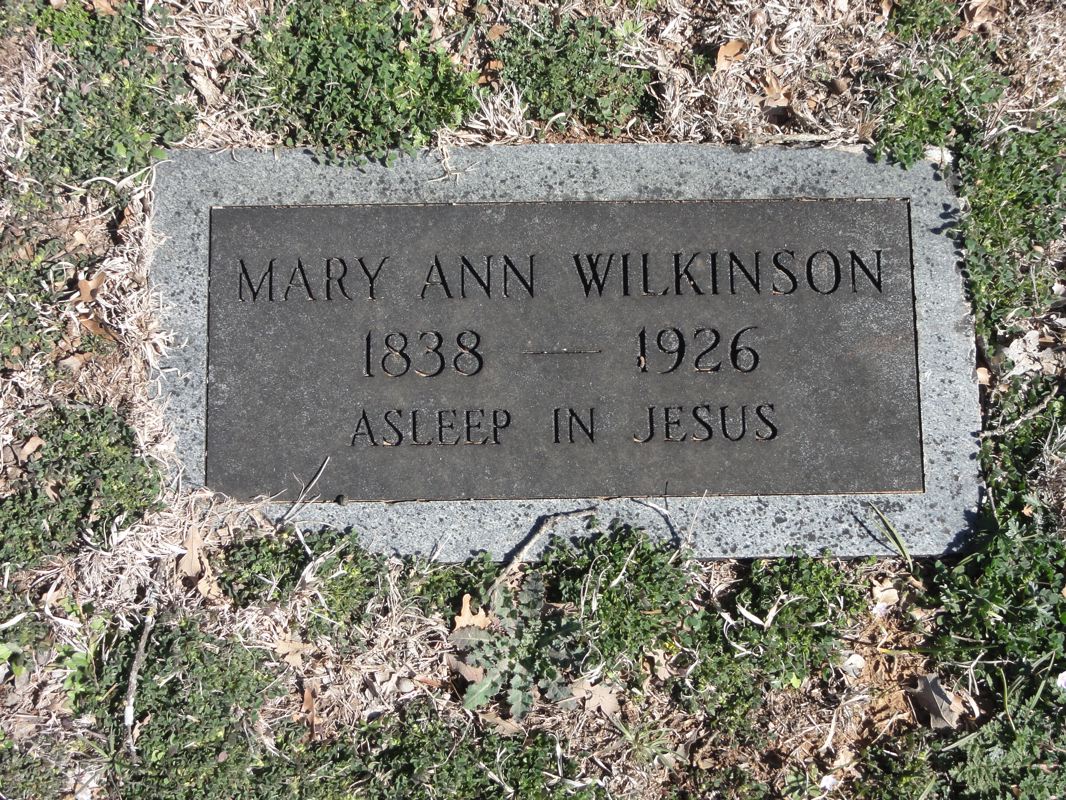
Mary Ann Wilkinson
1838-1926
Asleep In Jesus
The mother of U.G. Wilkinson

Ulysses G.
Gospel Minister
1863-1925
Jennie M.
1870-1964
WILKINSON
![]()
Photos Taken February 22, 2012
Courtesy of Scott Harp
www.TheRestorationMovement.com
Web editor note: In February, 2012, it was my privilege to visit the grave of U.G. Wilkinson. I was invited to take part in the annual Affirming The Faith Lectureship in Oklahoma City, Oklahoma. Getting into the area early, I was afforded the opportunity to put about 2000 miles on a rental car in order to locate graves of gospel preachers and church leaders of yesteryear in a wide area. My third day I was able to visit the grave of U.G. Wilkinson. U.G. Wilkinson's brother, T. B. Wilkinson was also a gospel preacher. He is buried in Duncan, Oklahoma
![]()

